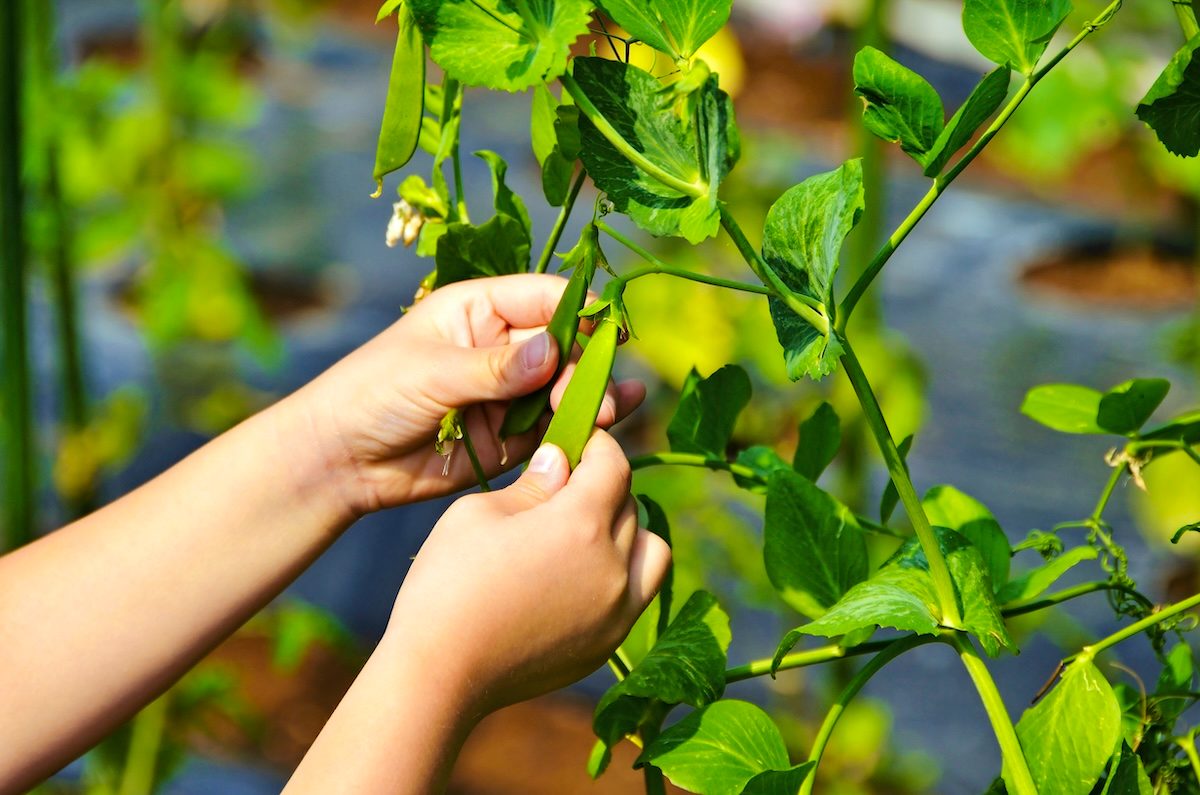Homegrown peas are flavorful and you'll be surprised how easy peas are to grow. You can plant peas weeks before your garden is frost-free.

The Backyard Gardener’s Guide to Growing Peas

If you’re the kind of gardener who likes to get out early in the spring to start growing vegetables well before your last frost, you’ll likely love growing peas. Peas prefer cool weather! I was reminded of just how early peas can be sown when I found an old seed packet on which my dad had written, “sown March 16.” His frost-free date was generally May 10.
Check out the top 10 easy vegetables to grow in your garden.
On This Page
Types of Peas to Grow

There are three main types of peas to grow for eating.
Snow peas
Snow peas are flat pods that you can eat, pod and all. A popular variety to try is ‘Oregon Snow Pod II.‘
Snap peas
Snap peas, AKA sugar snap peas, are plump pods also eaten pod and all. Many varieties include “sugar” in the name, like ‘Sugar Ann,‘ because of the sweetness when freshly picked.
Shelling peas
Shelling peas are also called English peas. You need to remove the peas from the pods, which are tough and not edible. The shelled-out peas are sweet and delicious. My favorite variety is ‘Green Arrow‘ because it has more peas per pod, which saves time when you’re removing all those peas by hand.
Learn how to grow cucumbers in your vegetable garden.
When to Plant Peas
You can plant peas in the spring, much earlier than you probably think. Peas are a cool-season crop that tolerates frost. The key with pea seeds is the soil temperature, which should be above 40 F to ensure germination.
Direct sow peas four to six weeks before your usual frost-free date. Where summers are not too hot, you can try planting a second crop of peas to harvest in the fall. Sow seeds 10 to 12 weeks before your expected first frost.
How to Plant Peas
All three types of peas — snow, snap, and shelling — require the same growing conditions.
Direct sow peas in the garden
Peas don’t like their roots disturbed, so direct sow them in rows. Choose a sunny, well-draining spot. Sow seeds about 2 inches apart and 1 inch deep. Space rows far enough to walk between them when harvesting.
Provide support for pea vines
Peas generally produce small vines that need something to climb up. In my garden, I put up re-usable fencing just for the peas and take it down once they’re finished.
Add a soil inoculant
This step is optional. Peas are legumes so they “fix” nitrogen, taking it from the air and changing it to a form the plant can use. That’s good for the peas and whatever else you plant in that area afterward.
Peas require certain bacteria for this process, which are often present in the soil. To be sure you’ve got the right bacteria in your garden, buy an inoculant. Follow the instructions on the package to coat the seeds before planting, or apply the inoculant to your soil.
How to Grow and Care for Peas
Follow these best practices for success.
Weed rows carefully
Carefully remove any weeds that grow up around the rows so you don’t disturb the roots of the pea vines.
Water peas when you don’t get rain
As with most vegetable crops, if you have dry periods, water the peas. Because peas fix nitrogen in the soil, it isn’t necessary to fertilize the plants.
Keep rabbits away from peas
Rabbits may nibble down young pea vines, so consider fencing around your garden to keep rabbits out if they’re problematic in your area. Insect pests generally don’t bother peas.
How to Harvest Peas

Pick peas every other day or so as they ripen. The best time is early morning, when the moisture content in the peas will be at its highest. Support the vine in one hand and pluck the pea pod off with your other hand to avoid damaging the vines, which may still be flowering and producing more peas.
If you are unsure if your peas are ready to harvest, pick a pea and taste it. Snap and snow pea pods should be tender and not taste starchy. Shelling peas should taste slightly sweet.
Snow peas
Pick snow peas when the pods are still flat before you see the seeds forming.
Snap peas
Pick snap peas when they are 2 to 3 inches long. The pods should be plump.
Shelling peas
Pick shelling peas when the pods are plump and rounded, and you can see the shape of the round pea seeds inside. Open the pods and remove (shell out) the peas. Toss or compost the pods and enjoy your fresh peas.
Remember that the sugars in the peas turn to starch when stored, so eat your peas as soon as possible after picking for the best flavor.
Compost old vines
Once the weather warms up to hot summertime temperatures, your pea plants will be done. Vines will stop growing and quickly turn brown. This indicates it’s time to pull out the vines and add them to your compost pile.
Sources
- West Virgina Extension – Legumes & Nitrogen Fixation



















